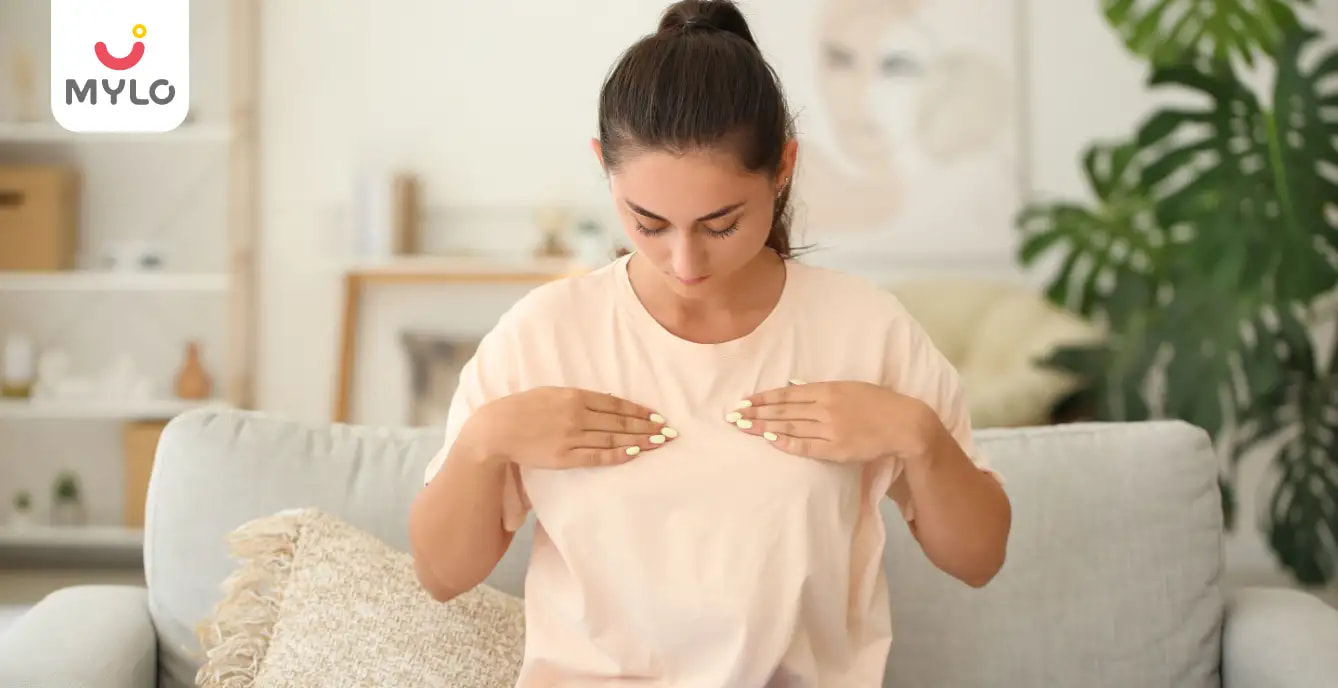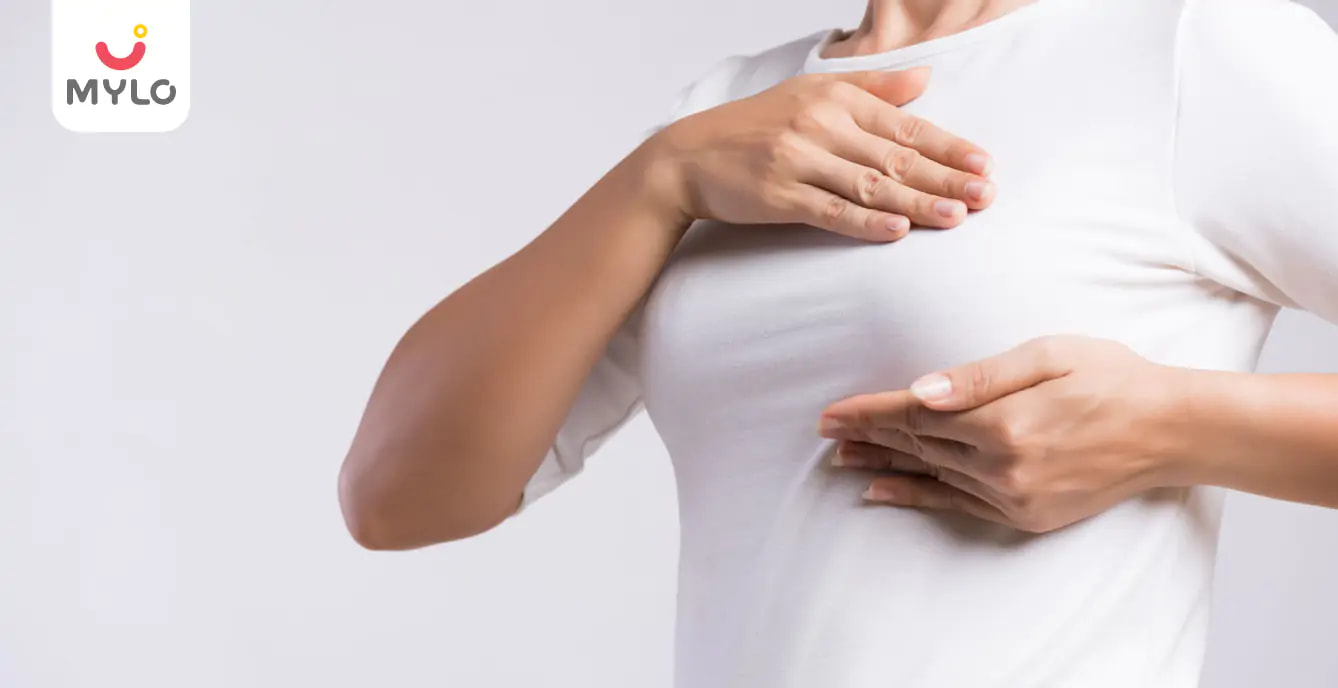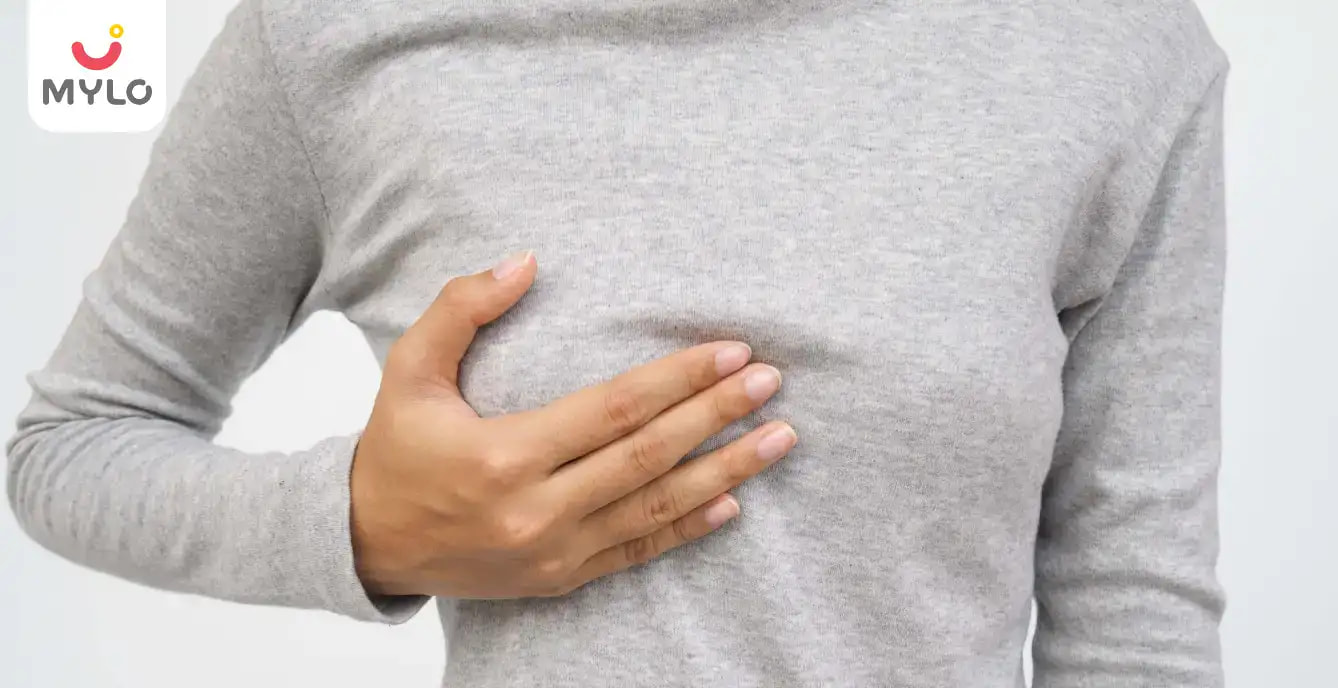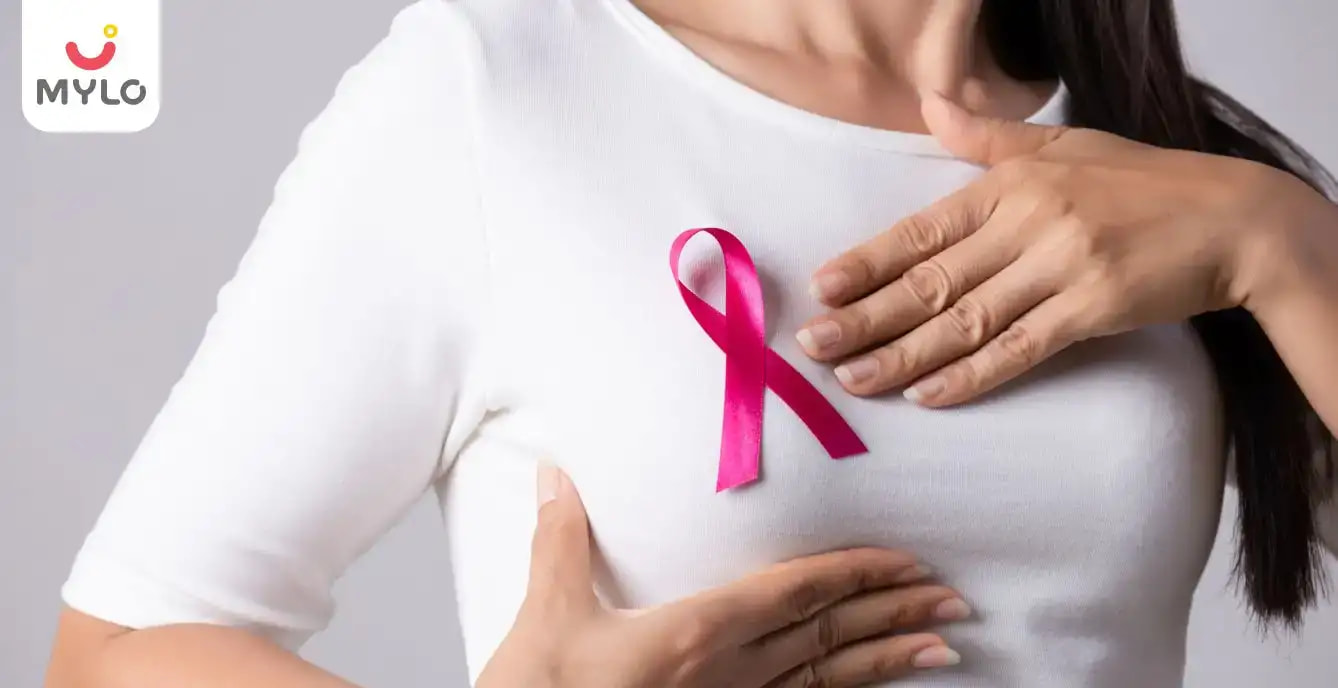Home

Women Specific Issues

Fibroadenoma of the Breast: Meaning, Symptoms & Causes
In this Article
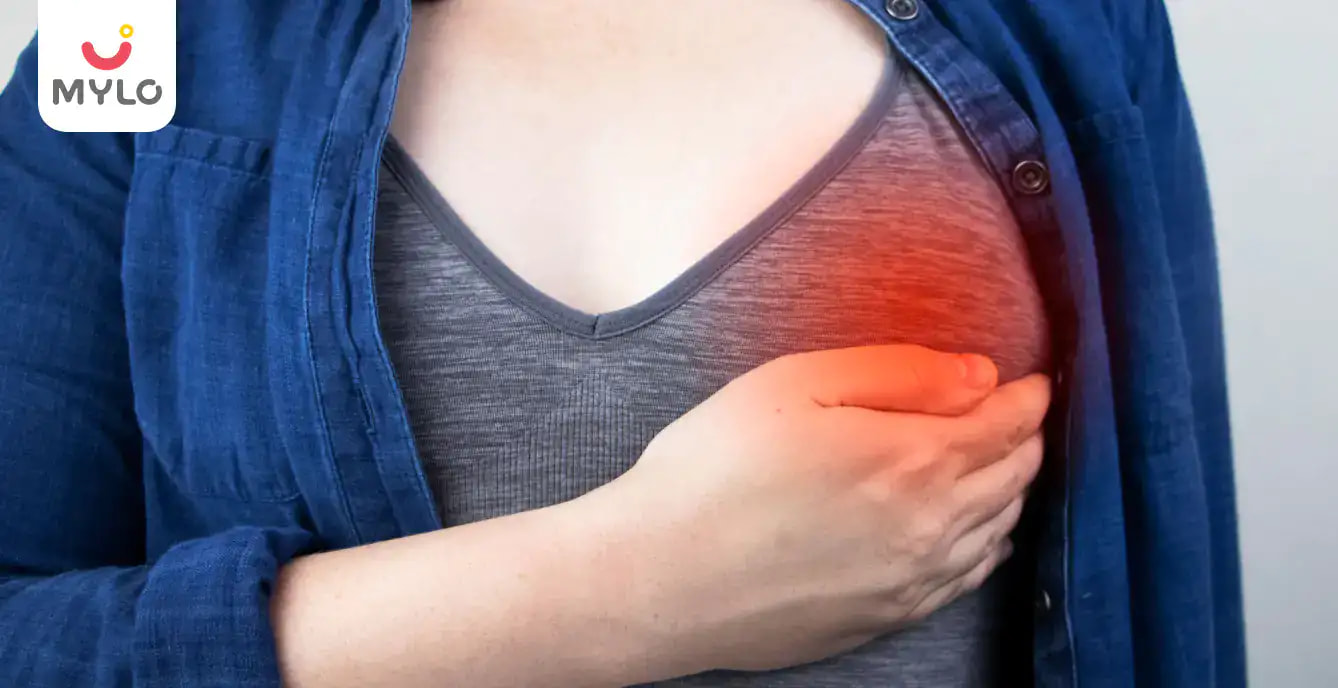
Women Specific Issues
Fibroadenoma of the Breast: Meaning, Symptoms & Causes
Updated on 3 November 2023
Fibroadenoma of the breast is a common yet harmless condition that many women worldwide experience. The condition generally does not require any extensive treatment and might even disappear on its own. Let’s see what is fibroadenoma of the breast, its causes, and its symptoms through this article.
What is Fibroadenoma of the Breast?
A fibroadenoma of the breast is a benign (non-cancerous) lump that typically occurs in young women. This type of tumour is made up of both glandular and fibrous tissue. Fibroadenomas are usually discovered during a routine mammogram or breast exam.
While these lumps are usually harmless, they can sometimes grow large enough to cause pain or discomfort. In rare cases, a fibroadenoma may turn into breast cancer. For this reason, it's important to have any suspicious lumps or growths checked out by a doctor.
If one has been diagnosed with fibroadenosis, their doctor will likely recommend monitoring the tumour with regular mammograms. In some cases, surgery may be necessary to remove the tumour.
You may also like: Breast Lump During Pregnancy: When to Get Serious and Visit a Doctor
What are the Common Symptoms of Fibroadenoma of the Breast?
There are a few different types of breast fibroadenomas, and each one can cause different fibroadenoma symptoms. The most common symptom of fibroadenoma of the breast is a lump or mass in the breast. This lump is usually painless and can be felt through the skin. The lump might also feel extremely smooth with distinct borders and can be rubbery or firm to the touch. In some cases, patients might also experience slight fibroadenoma pain and discomfort. In general, fibroadenomas grow at a very slow pace; hence one might not feel them instantly. However, as they grow over time, they may develop distinct borders, which makes self-diagnosis much more apparent.
You may also like: Breast Self Examination: How to Screen Your Breasts for Lumps
What Causes Fibroadenoma of the Breast?
There are several possible causes of fibroadenoma of the breast, but the exact cause is unknown. However, some possible contributing factors include:
1. Hormonal changes
This is thought to be the most likely cause, as fibroadenomas are more common in women of childbearing age. Estrogen (a female hormone) is thought to play a role in the development of fibroadenomas.
2. Family history
If you have a family member with a history of fibroadenomas, you may be more likely to develop them as well.
3. Obesity
Research has shown that being overweight (increased BMI) has been linked to an increased risk of developing fibroadenomas.
You may also like: Medial Screening Tests Every Woman Should Get Done
While the exact fibroadenoma cause is unknown, some possible risk factors may contribute to their development. If you are concerned about your risk, speak to your doctor.
What are the Different Types of Fibroadenomas?
There are several different types of fibroadenoma of the breast, each with its own set of symptoms and treatment options. The most common type is benign proliferative breast disease, which is characterized by the growth of abnormal breast tissue. This type of fibroadenoma is usually benign, meaning it is not cancerous and does not typically require treatment. However, if the fibroadenoma grows larger than 5 cm, it may need to be removed surgically. Other types of fibroadenoma include ductal fibroadenoma, which is characterized by the growth of abnormal tissue in the breast ducts and is usually benign. Other types of breast fibroadenosis, depending on the size and complexity, are as follows:
- Simple fibroadenoma
- Complex fibroadenoma
- Giant/Juvenile fibroadenoma
You may also like: Breast Diseases: Types, Symptoms & Diagnosis
What Treatment Options are Available for Breast Fibroadenoma?
There are a few different breast fibroadenoma treatment options available today. One option is to have the lump removed surgically. This is typically done if the lump is large or if it is causing pain. Fibroadenoma is removed through a procedure called an excision biopsy. The procedure is done under general anaesthesia and is highly effective in treating large and complex fibroadenomas.
However, most fibroadenomas do not grow in size and may also disappear on their own as they are responsive to female hormones (typically estrogen). Henceforth, some women choose to just keep an eye on the lump and not have any treatment. This is typically done if the lump is small and there are no other symptoms.
You may also like: What Is Breast Cyst: Types, Causes, Symptoms & Treatment
When to See a Doctor?
If someone notices a lump in their breast and suspects it to be a fibroadenoma, they may wonder when they should see a doctor. The answer to this question depends on a few factors, such as the size of the lump and their personal health history. If the lump is large, or if a person has a family history of breast cancer, they should see a doctor sooner rather than later. Likewise, if they have any other risk factors for breast cancer, such as a history of radiation therapy to the chest area, they should also see a doctor.
In general, however, most fibroadenomas can be followed with routine mammograms and breast exams. If a person has any concerns about their breast health, or if they notice any changes in their breast, be sure to see a doctor immediately.
You may also like:Top 7 Tips to Prevent Breast Cancer
References
- Bhettani MK, Rehman M, Altaf HN, Ahmed SM, Tahir AA, Khan MS, Imran T. (2019). Correlation Between Body Mass Index and Fibroadenoma. NCBI
- Ajmal M, Khan M, Van Fossen K. (2022). Breast Fibroadenoma. NCBI



Written by
Madhavi Gupta
Dr. Madhavi Gupta is an accomplished Ayurvedic doctor specializing in Medical content writing with an experience of over 10 years.
Read MoreGet baby's diet chart, and growth tips

Related Articles
Related Questions
Hello frnds..still no pain...doctor said head fix nhi hua hai..bt vagina me pain hai aur back pain bhi... anyone having same issues??

Kon kon c chije aisi hai jo pregnancy mei gas acidity jalan karti hain... Koi btayega plz bcz mujhe aksar khane ke baad hi samagh aata hai ki is chij se gas acidity jalan ho gyi hai. Please share your knowledge

I am 13 week pregnancy. Anyone having Storione-xt tablet. It better to have morning or night ???

Hlo to be moms....i hv a query...in my 9.5 wk i feel body joint pain like in ankle, knee, wrist, shoulder, toes....pain intensity is high...i cnt sleep....what should i do pls help....cn i cosult my doc.

Influenza and boostrix injection kisiko laga hai kya 8 month pregnancy me and q lagta hai ye plz reply me

RECENTLY PUBLISHED ARTICLES
our most recent articles

Diet & Nutrition
গর্ভাবস্থায় আলুবোখরা: উপকারিতা ও ঝুঁকি | Prunes During Pregnancy: Benefits & Risks in Bengali

Diet & Nutrition
গর্ভাবস্থায় হিং | ঝুঁকি, সুবিধা এবং অন্যান্য চিকিৎসা | Hing During Pregnancy | Risks, Benefits & Other Treatments in Bengali

Women Specific Issues
স্তনের উপর সাদা দাগ: লক্ষণ, কারণ এবং চিকিৎসা | White Spots on Nipple: Causes, Symptoms, and Treatments in Bengali

Diet & Nutrition
গর্ভাবস্থায় পোহা: উপকারিতা, ধরণ এবং রেসিপি | Poha During Pregnancy: Benefits, Types & Recipes in Bengali

Diet & Nutrition
গর্ভাবস্থায় মাছ: উপকারিতা এবং ঝুঁকি | Fish In Pregnancy: Benefits and Risks in Bengali

Diet & Nutrition
গর্ভাবস্থায় রেড ওয়াইন: পার্শ্ব প্রতিক্রিয়া এবং নির্দেশিকা | Red Wine During Pregnancy: Side Effects & Guidelines in Bengali
- ইনার থাই চ্যাফিং: কারণ, উপসর্গ এবং চিকিৎসা | Inner Thigh Chafing: Causes, Symptoms & Treatment in Bengali
- গর্ভাবস্থায় ব্রাউন রাইস: উপকারিতা ও সতর্কতা | Brown Rice During Pregnancy: Benefits & Precautions in Bengali
- Velamentous Cord Insertion - Precautions, Results & Safety
- Unlock the Secret to Flawless Skin: 7 Must-Have Qualities in a Face Serum
- Unlock the Secret to Radiant Skin: How Vitamin C Serum Can Transform Your Complexion
- Gender No Bar: 10 Reasons Why Everyone Needs a Body Lotion
- Unlock the Secret to Radiant Skin How to Choose the Perfect Body Lotion for Your Skin Type
- Top 10 Reasons to Apply a Body Lotion After Every Bath
- Communication in Toddlers: Milestones & Activities
- How to Improve Vocabulary for Toddlers?
- A Comprehensive Guide to Understanding Placenta Accreta
- Vulvovaginitis in Toddlers Causes, Symptoms and Treatment
- A Comprehensive Guide to Understanding Cerebral Palsy in Children
- Bitter Taste in Mouth During Pregnancy: Understanding the Causes and Remedies


AWARDS AND RECOGNITION

Mylo wins Forbes D2C Disruptor award

Mylo wins The Economic Times Promising Brands 2022
AS SEEN IN
















- Mylo Care: Effective and science-backed personal care and wellness solutions for a joyful you.
- Mylo Baby: Science-backed, gentle and effective personal care & hygiene range for your little one.
- Mylo Community: Trusted and empathetic community of 10mn+ parents and experts.
Product Categories
baby carrier | baby soap | baby wipes | stretch marks cream | baby cream | baby shampoo | baby massage oil | baby hair oil | stretch marks oil | baby body wash | baby powder | baby lotion | diaper rash cream | newborn diapers | teether | baby kajal | baby diapers | cloth diapers |



